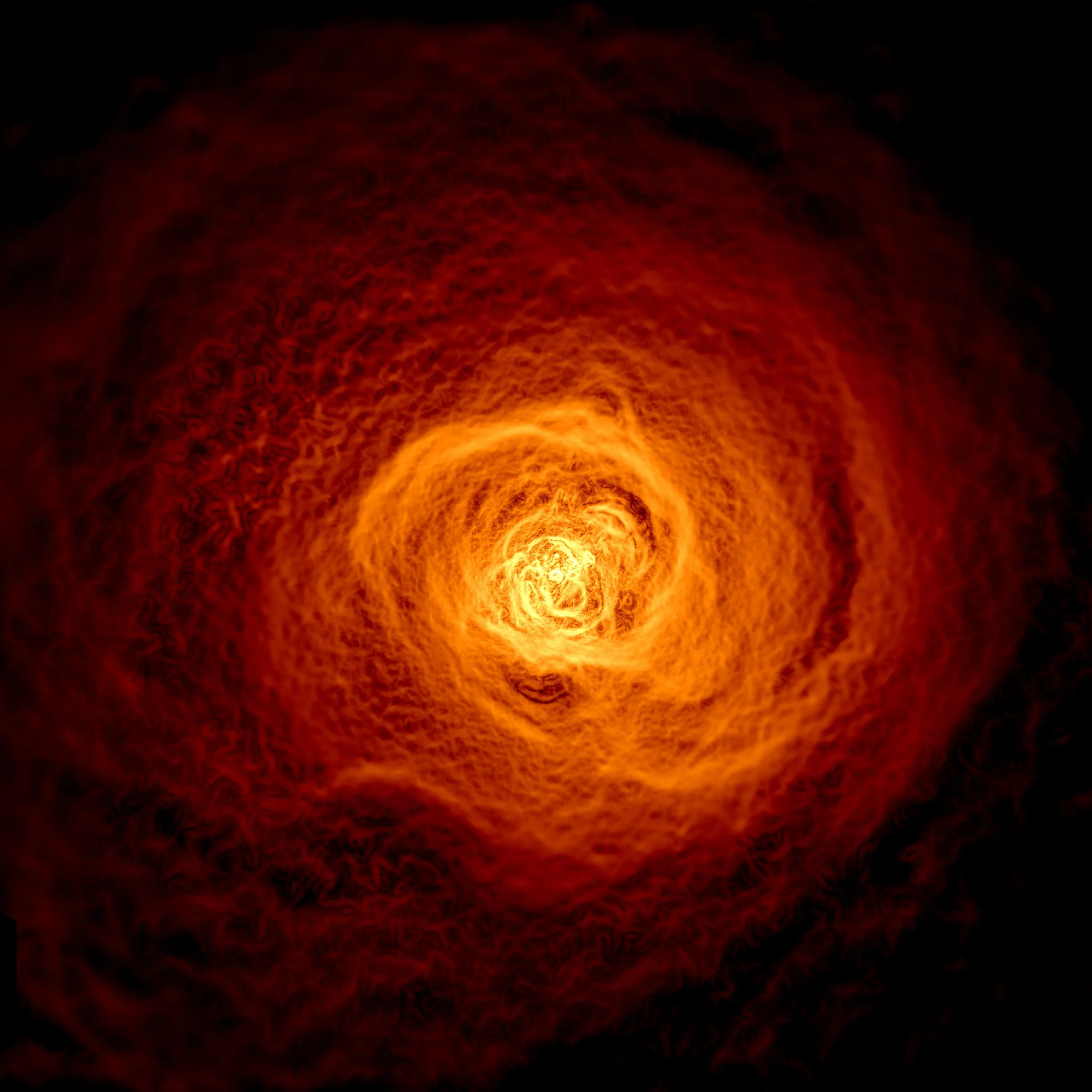PERSEUS’ LAMENT
Perseus’ lament draws its musical material from NASA's sonification of pressure waves emitted by the supermassive black hole at the center of the Perseus galaxy cluster. Although sound cannot generally propagate in space, as it is essentially a vacuum, the Perseus galaxy cluster contains copious amounts of gas that engulfs thousands of galaxies within it, providing a medium for sound waves to propagate. These oscillations produce frequencies about 57 octaves below middle C (C4), and are therefore imperceptible to the human ear. To make them audible, they have been normalized and resynthesized to fit within human hearing range (20-20Khz).
NASA’s sonification, about 30 seconds long, was expanded to about six minutes using special software that preserves all harmonic and timbre diversity of the original sound. This process, a kind of aural “slow motion”, allows a much better appreciation of the complexity of the original sound. From this expanded version, all musical information was extracted. All harmonies in the piano realization arise from adapting the extended black whole sound to equal temperament (12ET). Formal structure and musical narrative emanate naturally from the extended black hole sound.
The non-tempered sonorities in the original sound coexist with its artistic and ornamented "translation" performed live by the pianist. This amalgam produces a sound kaleidoscope that evokes the “overpainting” technique of the German artist Gerhard Richter.

